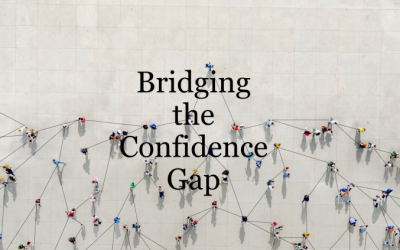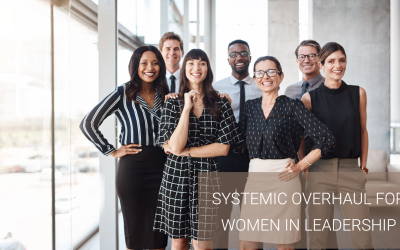Beauty vs. Intelligence: The stereotype of attractive women and their intellect
In our society, persistent stereotypes continue to disadvantage women. One of the most common and harmful prejudices is that beauty and intelligence are mutually exclusive. This notion implies that a woman who is attractive cannot be smart and vice versa. This stereotype is not only insulting but also detrimental to women in all aspects of their lives, from the workplace to personal relationships. In this article, I aim to debunk this misconception and explain how we, as a society, can combat these prejudices, using examples from Mary Ann Sieghart’s book “The Authority Gap.”
The origin of the stereotype
The idea that beauty and intelligence are mutually exclusive is deeply rooted in historical and cultural contexts. This stereotype originates from a patriarchal society that reduces women to their appearance. Historically, women were often seen as decorative objects, with their value primarily determined by their physical appearance. This objectification has contributed to the notion that women cannot focus on both their looks and their intellect.
In ancient civilizations, beauty was often equated with purity and simplicity, while intelligence was seen as a masculine trait. Women who exhibited intellectual capabilities were sometimes viewed with suspicion or outright disdain. The societal expectation was that women should remain in the domestic sphere, where their primary roles were to maintain their appearance and fulfill duties as wives and mothers. This separation of beauty and intelligence has been perpetuated through centuries, ingraining itself in cultural norms and expectations.
During the Renaissance and Enlightenment periods, where intellectual pursuits were highly valued, women who engaged in scholarly activities were often ridiculed or ostracized. They were derogatorily labeled as “bluestockings,” a term used to mock educated women who dared to step outside the bounds of traditional femininity. This label carried the implication that intellectual women were unattractive or unfeminine, further entrenching the belief that beauty and intelligence could not coexist.
The impact on women
The stereotype that beautiful women are not intelligent has far-reaching consequences. In professional settings, attractive women are often not taken seriously. Their ideas and contributions may be trivialized or ignored simply because of their appearance. This leads to missed opportunities and underrepresentation in leadership positions. Additionally, women often feel the pressure to choose between their appearance and their intellectual ambitions, leading to inner conflicts and insecurity.
Women who excel in their fields often face a “double bind” where they are scrutinized more harshly than their male counterparts. If they are attractive, their competence may be questioned; if they are not deemed conventionally attractive, they may be overlooked or dismissed altogether. This double bind forces women to navigate a complex landscape where their appearance and intelligence are constantly judged against each other.
Moreover, this stereotype extends beyond the workplace. In social settings, attractive women may find that their opinions are disregarded or belittled, as others assume they lack the depth or knowledge to contribute meaningfully to discussions. This can lead to a diminished sense of self-worth and discourage women from pursuing their intellectual interests openly.
Examples from “The Authority Gap”
In “The Authority Gap,” Sieghart discusses various examples of how women, despite their competence and achievements, are often undermined because of their appearance. One of the stories she highlights is about the American author Catherine Nichols. When Nichols submitted her manuscript under a male pseudonym, she received significantly more positive responses and interest from publishers than when she submitted the same manuscript under her own name. This illustrates how gender, and possibly also appearance-based prejudices, can influence perceptions of intellect and competence.
Nichols’ experience is a stark reminder of the pervasive biases that still exist in the literary world, where a woman’s work is often devalued unless it is presented under the guise of masculinity. This example underscores the broader issue of how women’s intellectual contributions are frequently diminished, particularly when they are perceived as attractive.
Another example from the book involves the experience of Mary McAleese, former president of Ireland. During an official visit to the Vatican, Pope John Paul II ignored her and instead addressed her husband, assuming he was the president. While this incident primarily relates to gender, it epitomizes the broader cultural tendency to undervalue women, regardless of their appearance or intellect. McAleese’s experience highlights how even women in positions of significant power and authority are not immune to the prejudices that seek to undermine their legitimacy.
The book also recounts the story of Frances Morris, director of Tate Modern. Despite her high-ranking position, Morris often experiences a lack of respect and authority when people are unaware of her job title. She notes that when she leaves her workplace, she is frequently overlooked in favor of her male colleagues or husband, highlighting how societal biases extend beyond professional settings. Morris’s experience reveals the subtle yet pervasive ways in which authority is conferred upon men by default, while women must constantly prove their worth.
Additionally, Sieghart shares the experience of Janet Yellen, US Treasury Secretary, who emphasizes the importance of recognition and gratitude in leadership. Yellen’s approach to leadership contrasts with stereotypical male leadership traits, showing that effective leadership can be empathetic and inclusive, challenging the notion that authoritative roles are inherently masculine. Yellen’s success as a leader demonstrates that qualities often dismissed as “soft” or “feminine” are in fact critical to effective leadership, challenging the conventional wisdom that associates authority with traditionally masculine traits.
The double standard
Interestingly, this double standard usually does not apply to men. Attractive men are often seen as charismatic and competent, which can improve their professional prospects. This difference in perception highlights the gender inequality that still exists in our society. Men are much more often automatically considered experts, regardless of their appearance, whereas women constantly have to prove their competence.
The societal narrative that equates attractiveness in men with charisma and leadership potential further exacerbates gender disparities. Men who are deemed attractive are often given the benefit of the doubt regarding their abilities, while women must work harder to overcome the assumption that their looks are their primary asset. This double standard perpetuates a cycle where men are more easily afforded opportunities for advancement, while women must continually fight to be recognized for their intellect and contributions.
This disparity is particularly evident in fields traditionally dominated by men, such as technology, finance, and politics. Attractive women in these industries often face skepticism about their qualifications and are sometimes accused of using their looks to gain favor or advance their careers. This not only undermines their achievements but also reinforces harmful stereotypes that limit women’s opportunities.
How we can combat this stereotype
Combating this stereotype requires efforts on multiple levels. Here are some steps we can take as a society:
-
Awareness and education
It is crucial to raise awareness about the harmful effects of this stereotype. Educational programs and campaigns can help inform people and change their perceptions. Awareness is the first step toward change. By incorporating discussions about gender bias into educational curricula and workplace training programs, we can begin to shift societal attitudes and encourage more equitable treatment of women. -
Media representation
The media play a powerful role in shaping our perceptions. By showing more complex and diverse representations of women in films, television, and advertising, we can help break this stereotype. Role models have a significant impact on changing cultural norms. It is essential for the media to portray women as multifaceted individuals who can be both attractive and intellectually capable. This includes promoting narratives where women’s intelligence is celebrated and not overshadowed by their appearance. -
Support and mentorship
Supporting and mentoring women in their professional and personal growth can help empower them and build their confidence, making them better equipped to challenge stereotypes. Mentoring programs can effectively support women in underrepresented sectors. Creating networks of support allows women to share their experiences and strategies for overcoming bias, fostering a sense of community and resilience. -
Cultural change
We need to promote a culture where women are valued for their capabilities and talents, regardless of their appearance. This begins with upbringing and extends to the workplace. Deeply ingrained cultural norms often form the biggest barriers to gender equality and can be addressed through collective efforts. Encouraging parents, educators, and leaders to recognize and nurture the intellectual potential of girls and women is key to dismantling these stereotypes. -
Self-reflection and behavior
Everyone should be aware of their own biases and actively work on changing their behavior. This means respecting and taking women seriously, regardless of their appearance. Self-awareness and the role individuals can play in promoting gender equality are crucial. By challenging our own assumptions and actively supporting women in their pursuits, we can contribute to a more equitable and just society.
Conclusion
The idea that beauty and intelligence are mutually exclusive is an outdated and harmful stereotype that has no place in modern society. Through awareness, education, and active behavior change, we can contribute to a world where women are valued for their full potential. Let us work towards a future where every woman, regardless of her appearance, has the opportunity to shine both intellectually and personally. As Mary Ann Sieghart clearly states in “The Authority Gap,” it is time to dismantle these deeply rooted prejudices and create a more just and equal world.
If you want to learn more about this and other topics, I highly recommend reading “The Authority Gap.” This book provides in-depth insights and practical advice on how we can close the authority gap between men and women and create a more inclusive society. By exploring the experiences and challenges faced by women across different fields, Sieghart offers a compelling argument for why closing the authority gap is essential for achieving true gender equality.
Latest Articles
The Confidence Gap Explained: Why It Exists and How We Can Bridge It
The Confidence Gap Explained: Why It Exists and How We Can Bridge ItThe “confidence gap” is a term that describes the difference in self-assurance between men and women, particularly in professional settings. While both men and women experience self-doubt, studies...
The Reykjavík Index for Leadership 2024: We’re Failing Women in Leadership, and It’s Time for a Systemic Overhaul
The Reykjavík Index for Leadership 2024: We’re Failing Women in Leadership, and It’s Time for a Systemic OverhaulThe Reykjavík Index for Leadership 2024 reveals a sobering truth: our progress toward gender equality in leadership is not just stalling; it’s reversing....


